11 Fragrant Winter Blooms That Thrive in the Cold
When winter rolls around, many plants retreat, but some flowers stand strong and continue to bloom through the cold. These cold-hardy beauties not only withstand frost but also fill the air with pleasant scents, making winter gardening something to look forward to. If you’re hoping to add fragrance to your winter landscape, you’re in luck. These blooms thrive in the cold and can offer a beautiful aroma throughout the season. Let’s explore the best flowers to grow when the temperature falls, all while enjoying their sweet fragrance.
This post may contain affiliate links, which helps keep this content free. Please read our disclosure for more info.
Winter Jasmine (Jasminum nudiflorum)
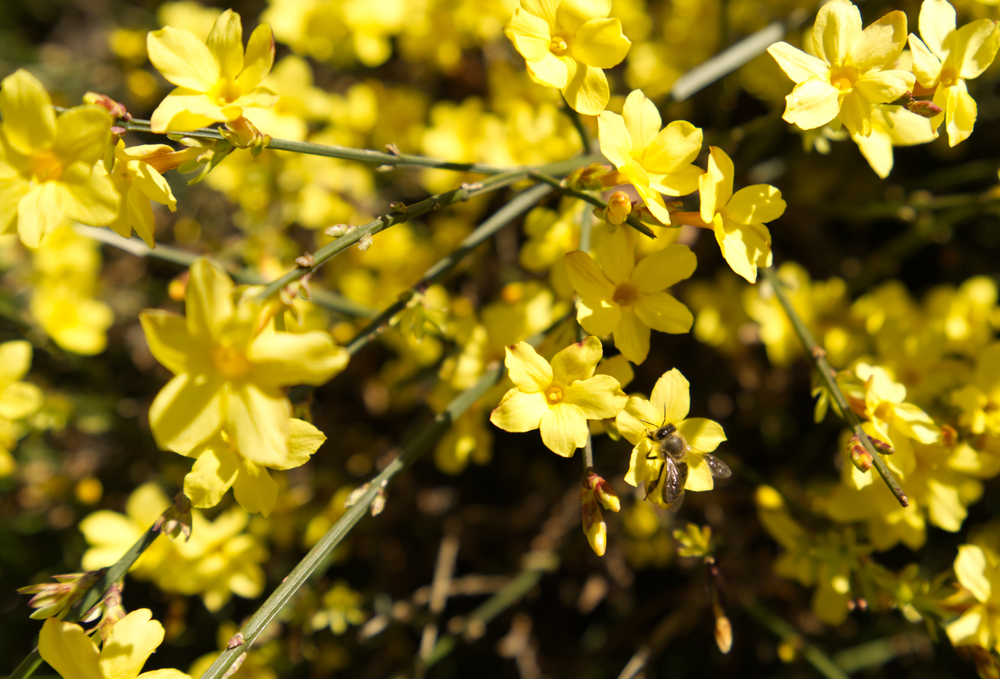
Winter Jasmine is a hardy shrub known for its bright yellow flowers that bloom in winter, offering a cheerful touch to any garden. It’s one of the first blooms to appear when the cold weather sets in, filling the air with a light, sweet fragrance. Winter Jasmine can grow well in both sun and partial shade, making it a versatile addition to your landscape. It thrives in well-drained soil and can be trained to climb or spread along the ground. While it is frost-resistant, it’s a good idea to protect young plants during extreme winter conditions to keep them thriving.
As the plant matures, it can reach up to 3 feet tall, with sprawling growth that adds a natural touch to garden borders. The blooms appear on bare stems, giving it an early winter appeal before most plants begin to bloom. Once the flowers fade, the plant’s green foliage continues to provide visual interest throughout the year. Winter Jasmine is perfect for adding a burst of color and fragrance to otherwise dull winter gardens. Its easy care and winter bloom time make it a popular choice for gardeners in colder climates.
Hellebore (Helleborus spp.)

Known as the Lenten Rose, the Hellebore is a tough perennial that produces stunning flowers in winter, often blooming through snow. Its flowers range in color from white to deep purple, and it emits a mild, pleasant fragrance. Hellebores thrive in shaded areas, making them perfect for adding life to darker parts of your garden. These plants grow best in well-drained, humus-rich soil and are excellent for providing visual interest in the winter months. Though they can handle cold weather, it’s important to keep them protected from heavy winds or extreme frost, which could damage the blooms.
The blooms of the Hellebore sit gracefully above the dark, evergreen leaves, giving the plant a striking appearance during the cold months. While the flowers themselves have a subtle fragrance, they are also an excellent choice for winter gardens because of their longevity. This plant is known for its resilience, surviving even harsh winter conditions while offering a splash of color. Over time, the plant can multiply and spread, creating a beautiful display of color and fragrance. If you’re seeking a low-maintenance plant with beautiful, fragrant winter flowers, Hellebore is an excellent option.
Witch Hazel (Hamamelis spp.)
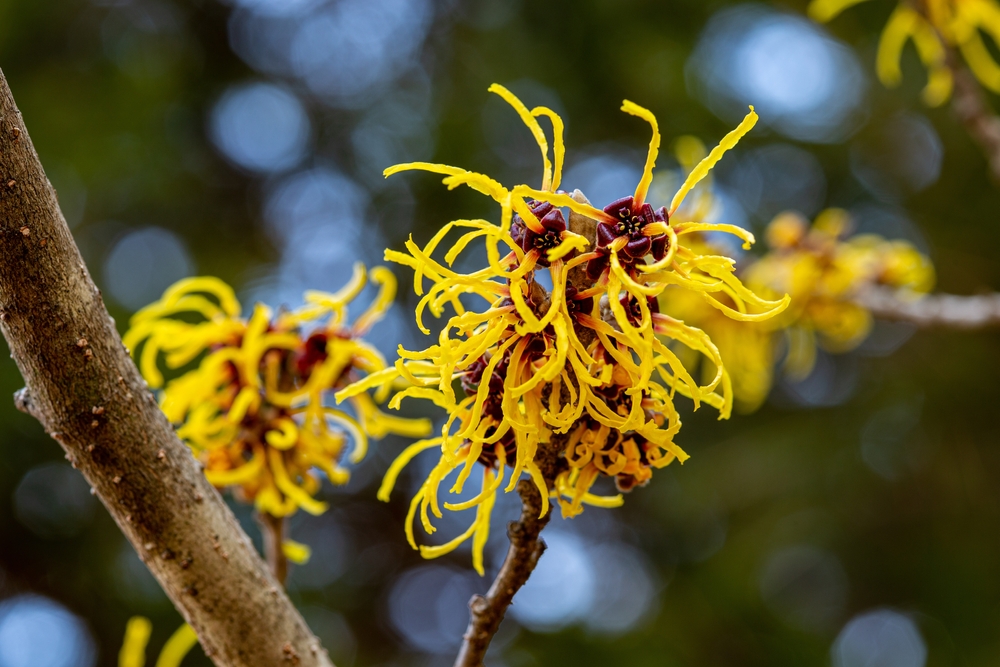
Witch Hazel is a deciduous shrub that blooms in winter, with unique yellow or red flowers that release a spicy, sweet fragrance. These flowers stand out against the bare branches, creating a beautiful contrast against the winter landscape. Witch Hazel thrives in partial shade and well-drained soil, making it ideal for woodland gardens. The plant is very cold-hardy, able to withstand temperatures well below freezing while still producing fragrant blossoms. If you’re looking to add something distinctive to your winter garden, Witch Hazel offers both fragrance and visual interest.
Beyond its winter blooms, Witch Hazel has medicinal uses, making it a multifunctional plant in the garden. The flowers are small but abundant, creating a striking display when viewed up close. Witch Hazel is also a popular choice for those looking to attract pollinators during the colder months, as its blooms provide an early food source. While the shrub requires little care once established, it benefits from occasional pruning to maintain its shape. For a beautiful, fragrant shrub that thrives in the cold, Witch Hazel is a fantastic option.
Snowdrop (Galanthus nivalis)
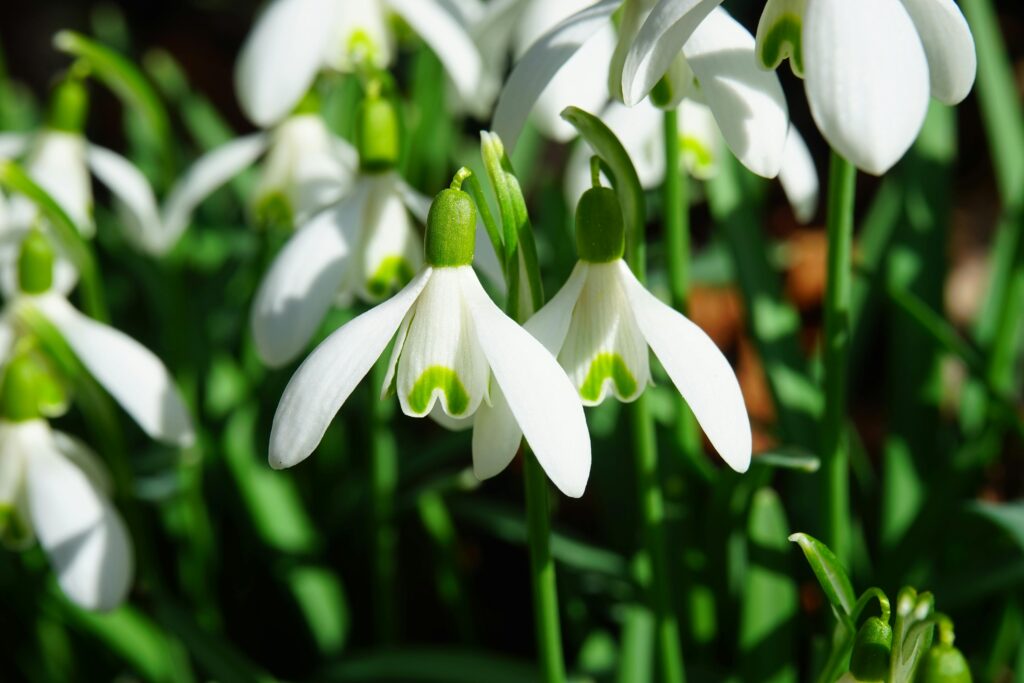
Snowdrops are one of the earliest winter bloomers, often peeking through the snow with their delicate white flowers. These small plants are well-known for their sweet, subtle fragrance, which is especially noticeable when you bend down to admire their beauty. Snowdrops prefer well-drained, moist soil and can thrive in both sun and partial shade, making them a versatile option for early winter color. They are cold-hardy, often emerging even during freezing temperatures, which is why they are beloved by gardeners in colder climates. The flowers typically last for several weeks, providing a welcome burst of fragrance during the coldest months.
Plant Snowdrops in clumps for a more dramatic impact, as they can naturalize and spread over time. They’re also an excellent choice for planting under trees or along garden borders, where they can thrive in early spring’s softer light. While the flowers are fragile-looking, Snowdrops are tough and require very little maintenance, making them perfect for those looking to add fragrance without much effort. Their mild fragrance combined with their beauty makes them a standout choice for winter gardens. If you haven’t yet added Snowdrops to your garden, they are worth considering for their early color and light scent.
Daphne (Daphne odora)
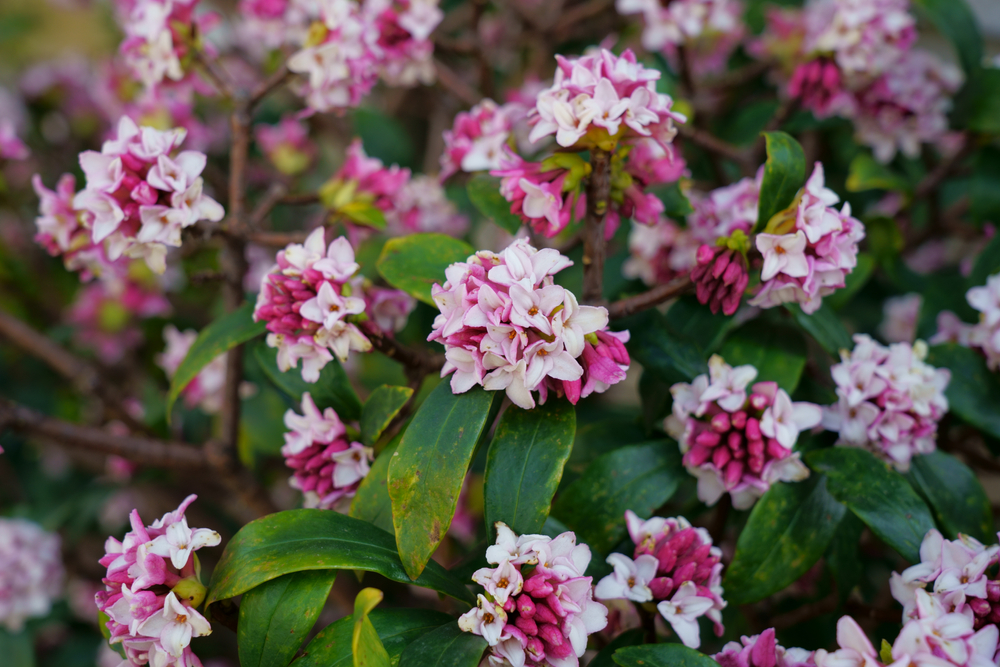
Daphne is a fragrant evergreen shrub that produces clusters of small, fragrant flowers in the winter, ranging from pink to white. The flowers’ sweet scent is often described as intoxicating, making it one of the most beloved winter bloomers. Daphne thrives in well-drained, slightly acidic soil, and it enjoys partial to full sun. Although it’s cold-hardy, this plant can be sensitive to frost, so some protection during severe cold spells can help maintain its health. The plant’s compact size makes it perfect for smaller gardens or as a container plant near doorways, where the fragrance can be enjoyed.
Daphne is known for its glossy, evergreen leaves, which continue to add greenery to the garden even after the flowers have faded. While it can be a bit finicky when it comes to soil and watering, once established, it is relatively low-maintenance. The plant’s fragrance, combined with its visually appealing flowers, makes it a great choice for adding both color and scent during the colder months. Its compact size also makes it an excellent option for urban or smaller gardens. If you’re looking for a fragrant winter shrub that offers beauty and scent, Daphne is definitely worth adding to your garden.
Winter Heath (Erica carnea)
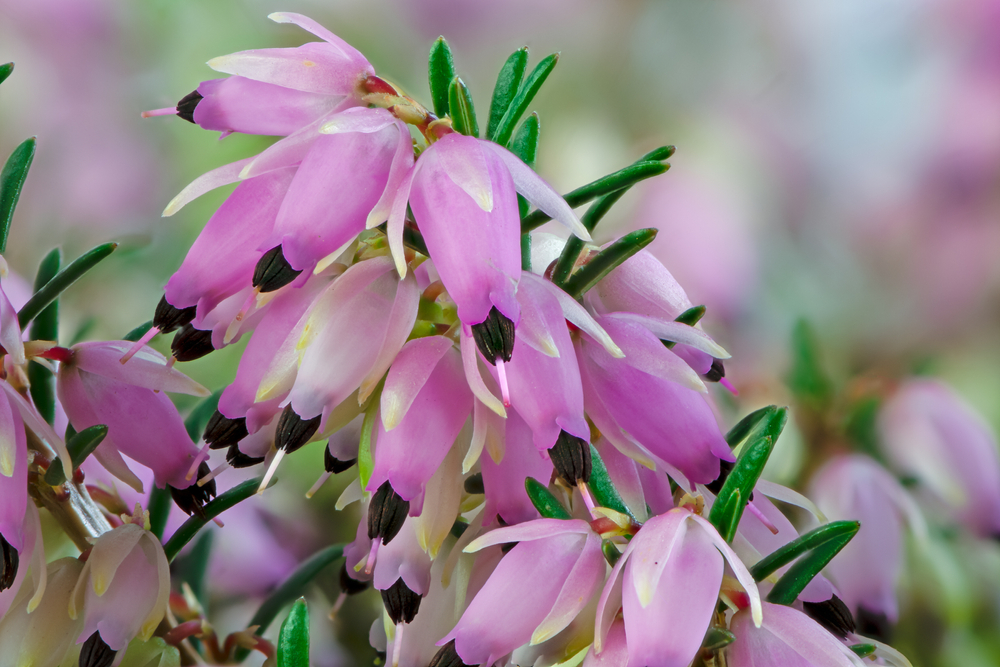
Winter Heath, or Erica carnea, is a hardy evergreen shrub that blooms in late winter, often when snow is still on the ground. Its small, bell-shaped flowers range from white to pink and purple, filling the air with a subtle fragrance. This plant thrives in acidic, well-drained soil and prefers full sun to partial shade. Despite its delicate appearance, Winter Heath is frost-tolerant and can survive through the coldest months, continuing to bloom even in freezing conditions. It’s a great addition to any garden that needs some winter color and fragrance.
Winter Heath grows in a low, spreading form, making it ideal for ground cover or as a border plant. It’s especially suited for rock gardens or areas with poor soil, as it doesn’t require much attention once established. The plant’s cheerful flowers brighten up the landscape during the darker winter months, and its fragrant blooms attract early pollinators. While it needs some care during its first few years to ensure proper growth, it becomes low-maintenance once established. For anyone looking to add a touch of color and scent to the winter garden, Winter Heath is an excellent choice.
Camellia (Camellia japonica)
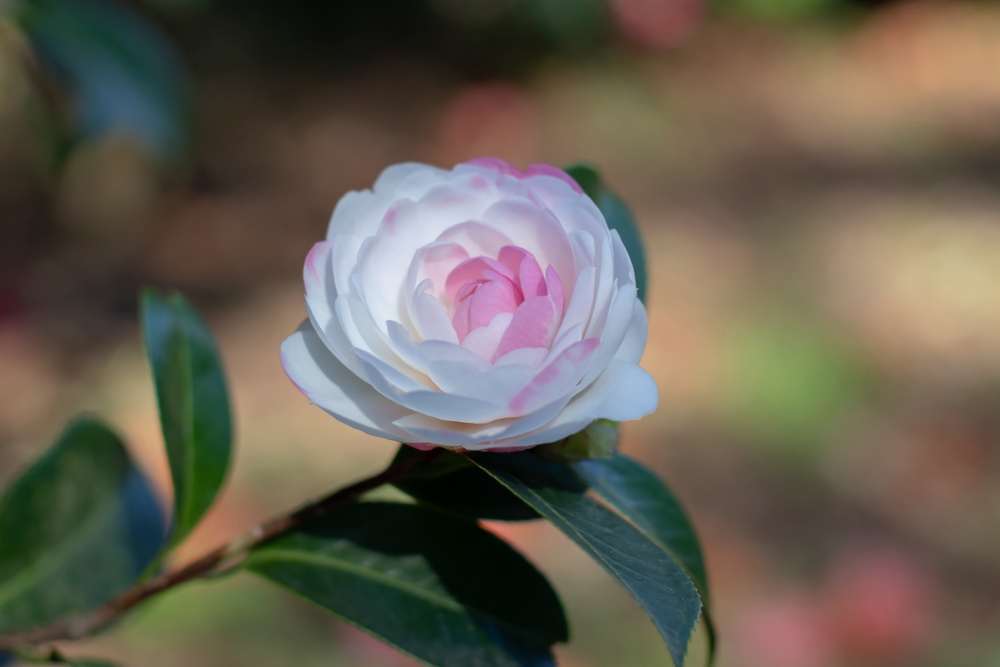
Camellias are known for their stunning, large blooms, which appear in winter and early spring. While most commonly seen in shades of red and pink, white varieties also exist, offering a variety of colors to suit any garden. The flowers have a delicate fragrance that can fill the air with a light, sweet scent. Camellias thrive in acidic, well-drained soil and need protection from strong winds, but they can handle cold temperatures, especially if planted in a sheltered spot. Their ability to bloom during the colder months makes them a standout in winter gardens.
These evergreen shrubs are perfect for creating visual interest in a garden during the colder months, as their glossy leaves provide year-round appeal. Camellias are also relatively easy to maintain, as long as they are planted in the right soil and given enough water. While their blossoms may be delicate, they are hardy and often last for weeks. Their fragrance is especially strong in the early morning or late afternoon, making them a perfect addition near entryways or patios. If you’re looking for a classic plant with both beauty and fragrance to add to your winter garden, Camellia is a great choice.
Fragrant Winter Sweet (Chimonanthus praecox)

Winter Sweet, or Chimonanthus praecox, is a shrub that blooms in late winter with small, yellow flowers that carry a strong, sweet fragrance. The plant’s aromatic flowers are one of the first signs of life after winter’s chill, offering a welcome scent and a burst of color. Winter Sweet thrives in full sun or partial shade and is well-suited for slightly acidic, well-drained soil. It’s particularly frost-tolerant and can withstand colder temperatures, continuing to bloom even when snow is on the ground. Its unique fragrance and early bloom time make it a favorite for gardeners who want to enjoy scent during the colder months.
The flowers are small but prolific, and the plant itself can grow to be quite large, reaching up to 10 feet in height. Its strong fragrance can be smelled from a distance, making it perfect for planting near walkways or close to your home. Winter Sweet requires minimal care once established, though occasional pruning helps maintain its shape. Its late winter blooms make it a rare and valuable addition to any garden, especially in areas with harsh winters. If you’re looking for a fragrant and hardy winter bloomer, Winter Sweet is an excellent option.
Lenten Rose (Helleborus orientalis)

The Lenten Rose, or Helleborus orientalis, is a perennial plant known for its early winter blooms that range from white to deep purple. It’s an excellent choice for gardens that experience cold winters, as it thrives even in frosty conditions. The plant produces large, cup-shaped flowers that last for weeks, filling the garden with a soft, sweet fragrance. To care for Lenten Rose, plant it in well-drained, slightly acidic soil, and give it some shade for best results. While it can handle cold temperatures, protecting the plant from harsh winds can help preserve its blooms longer.
Lenten Rose is also a great plant for woodland gardens or shaded areas, as it does well in partial to full shade. Its evergreen leaves provide interest even when the flowers are not in bloom. For best results, keep the soil consistently moist but not waterlogged, as this will help maintain the plant’s health. Because it blooms early in the season, it brings color and fragrance to the garden before most other plants have even begun to grow. If you’re looking for a hardy, fragrant winter flower, Lenten Rose is an excellent choice.
Sweet Box (Sarcococca spp.)
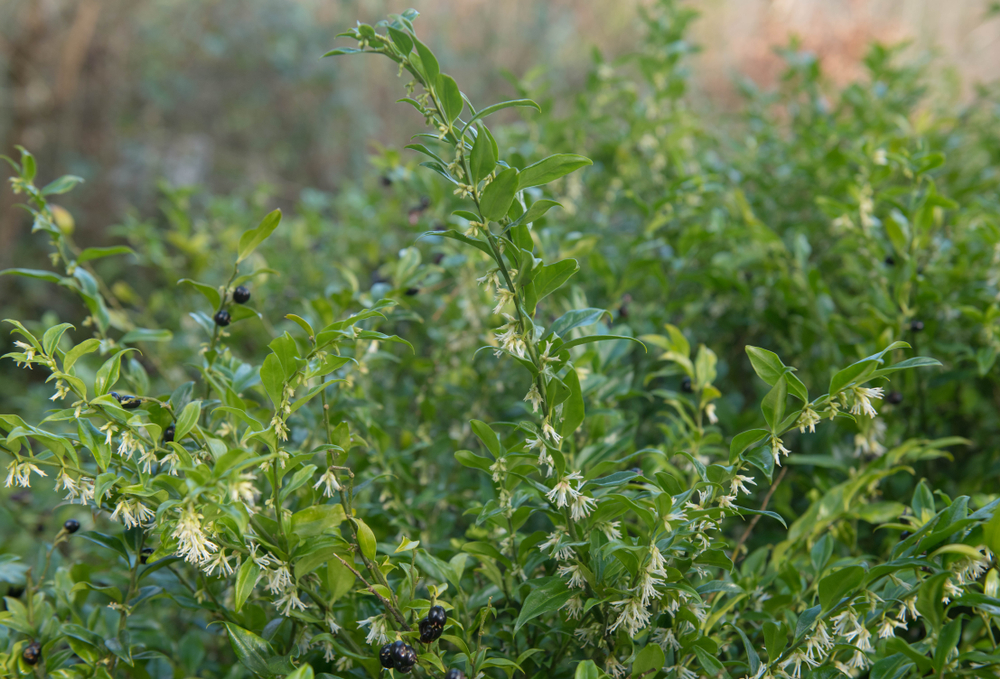
Sweet Box, or Sarcococca, is an evergreen shrub that produces tiny, fragrant white flowers in winter. It thrives in the shade, making it ideal for woodland gardens or shaded areas of your landscape. The flowers are small but pack a powerful scent, making them a lovely addition to any garden that lacks seasonal fragrance. Sweet Box is cold-hardy and can survive even harsh winters, continuing to provide a pleasant aroma throughout the colder months. Its ability to handle shade and frost makes it a versatile option for gardeners who want winter blooms in less sunny spots.
Sweet Box grows slowly but steadily, and its small size makes it suitable for containers or as a ground cover. It’s easy to maintain, requiring only occasional pruning to shape the plant. The glossy, dark green leaves provide a nice backdrop to the fragrant winter flowers. If you’re looking to fill a shady spot in your garden with a fragrant, hardy plant, Sweet Box is a great option. Its early winter blooms make it one of the first to bring fragrance to your garden in the colder months.
Viburnum x bodnantense Dawn

Viburnum x bodnantense Dawn’ is a deciduous shrub that blooms in late winter to early spring, producing clusters of pink and white flowers. Known for its sweet scent, this shrub brings much-needed fragrance to the garden when most plants are still dormant. It grows well in full sun or partial shade and thrives in moist, well-drained soil. Dawn is hardy enough to handle winter frost, continuing to bloom even in cold weather. For a winter garden with both color and scent, this shrub is an excellent choice.
The flowers, which appear before the leaves, last for several weeks, adding color and aroma to the garden during a typically dull time of year. Viburnum is relatively low-maintenance, though occasional pruning will help maintain its shape. This variety’s ability to bloom in the cold makes it stand out among other shrubs, and it’s especially effective for early-season fragrance. Its compact size makes it perfect for smaller gardens or mixed borders. For a plant that brings beauty and fragrance to the winter months, Viburnum x bodnantense Dawn is a perfect choice.
This article originally appeared on Avocadu.
